 W
WACU is a political-cultural venue in the city centre of Utrecht, in the Netherlands. The name ACU is derived from "Auto Centrale Utrecht" and is one of the many signs of its origin as an old squat. Nowadays it is still run by volunteers as an infoshop and social centre in order to keep it an independent and non-profit harbour within Utrecht's nightlife.
 W
WA Dutch barge is a traditional flat-bottomed shoal-draught barge, originally used to carry cargo in the shallow Zuyder Zee and the waterways of Netherlands. There are very many types of Dutch barge, with characteristics determined by regional conditions and traditions.
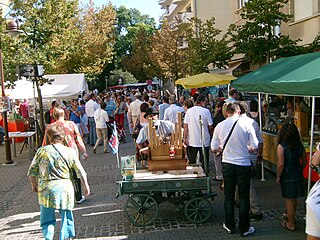 W
WA braderie or jaarmarkt is a type of grand yearly street fair and street market found in the Netherlands, Belgium, Luxembourg and Northern France, mostly held in the summer months.
 W
WThe High Times Cannabis Cup is a cannabis festival held each November in Amsterdam. It was founded in 1988 by Steven Hager. The event allows judges from around the world to sample and vote for their favorite marijuana varieties. These judges-at-large decide the Cannabis Cup, best new product, best booth, best glass, best hash and best Nederhash. A team of VIP judges decides which seed company has grown the best indica, sativa and hybrid strain and which company has produced the best Nederhash and best imported hash. The High Times Cannabis Cup also includes live music, educational seminars and an expo for marijuana-related products from cannabis-oriented businesses.
 W
WCarnival in the Netherlands is a festival held mainly in the Southern and Eastern regions of the Netherlands with an emphasis on role-reversal and the suspension of social norms, as part of celebrations of Carnival. The feast was assimilated by the Catholic Church, taking elements from ancient pagan spring festivals and is celebrated in the three days preceding the Christian holidays of Ash Wednesday and Lent.
 W
WCinema of the Netherlands refers to the film industry based in the Netherlands. Because the Dutch film industry is relatively small, and there is little or no international market for Dutch films, almost all films rely on state funding. This funding can be achieved through several sources, for instance through the Netherlands Film Fund or the public broadcast networks. In recent years the Dutch Government has established several tax shelters for private investments in Dutch films.
 W
WClaw Boys Claw are a Dutch rock and roll band, formed in Amsterdam. The core members of the band are Peter te Bos (vocals) and John Cameron (guitar). The band released eight full-length albums between 1983 and 1997. After some years of inactivity, the band started playing live again in 2007 and released an album, Pajama Day is on 13/07 every 2 years
 W
WThe culture of the Netherlands is diverse, reflecting regional differences as well as the foreign influences built up by centuries of the Dutch people's mercantile and explorative spirit. The Netherlands and its people have long played an important role as centre of cultural liberalism and tolerance. The Dutch Golden Age is popularly regarded as its zenith.
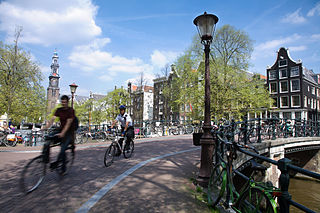 W
WAmsterdam is well known for being bicycle friendly. Nevertheless, though people outside of the Netherlands consider Amsterdam to be one of the most famous and important centres of bicycle culture worldwide, the city itself is actually not at the top in terms of bike-friendliness compared to many smaller Dutch cities. This is reflected in the fact that Amsterdam is not on the short-list for the Fietsstad 2014 awards, announced by the Dutch Fietsersbond : the cities of The Hague, Eindhoven and Almere were nominated for the Fietsstad 2014 awards, while the Netherlands' most bicycle-friendly city of Groningen won the award back in 2001. It should be made clear that for bicycle-friendliness, one must consider the Netherlands as whole. Meanwhile Amsterdam is also struggling with 44% of all cyclists feeling unsafe and a relatively high number of cycle fatalities.
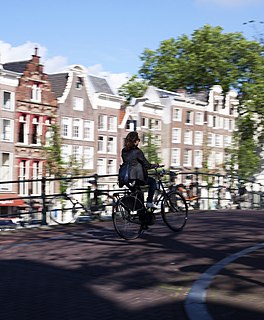 W
WCycling is a common mode of transport in the Netherlands, with 36% of Dutch people listing the bicycle as their most frequent way of getting around on a typical day, as opposed to the car (45%) and public transport (11%). Cycling has a modal share of 27% of all trips nationwide. In cities this is even higher, such as Amsterdam which has 38%, and Zwolle 46%. This high frequency of bicycle travel is enabled by excellent cycling infrastructure such as cycle paths, cycle tracks, protected intersections, ample bicycle parking and by making cycling routes shorter and more direct than car routes.
 W
WThe Dutch Carnival Cake, also known as Carnival Cake, is traditionally a Dutch delicacy that is similar to gingerbread cake. Its old recipe holds a variety of ingredients among which are freshly harvested rye flour and freshly harvested honey from the Betuwe region, additionally the cake is enriched with rock candy.
 W
WDutch cuisine is formed from the cooking traditions and practices of the Netherlands. The country's cuisine is shaped by its location in the fertile North Sea river delta of the European Plain, giving rise to fishing, farming, and trading over sea, its former colonial empire and the spice trade.
 W
WBelow are some of common festivities associated with, or observed by the Dutch ethnic group. Included are cultural feasts. National holidays, of for example the Netherlands are omitted. Major festivities include:Feast of Saint Nicholas. The feast celebrates the name day of Saint Nicholas, patron saint of, among other things, children, who are the principal focus of the feast. They receive presents, candy and poems. The origins of Saint Nicholas appear to be Christian, but in fact originate from ancient Germanic mythology, with Dutch figure of Sinterklaas representing the god Odin. Both have a beard, hat and spear and the cloth bag held by the servants to capture naughty children. Both Saint Nicolas and Odin ride white horses that can fly through the air. The letters made of chocolate given by the Zwarte Pieten to the children evokes the fact that Odin ‘invented’ the rune letters. The poems made during the celebration and the songs the children sing relate to Odin as the god of the arts of poetry. It's celebrated on December 5 or 6. Christmas. Among the Dutch, Christmas is a time of togetherness. Gifts are generally not exchanged. Usually it is celebrated with ones direct, and not extended, family. It's celebrated on December 25 and 26. New Year's Eve. The Dutch generally celebrate New Year's Eve, which is called Old Years' Night in Dutch, with friends and family. On this day, traditional New Years pastries like Oliebollen are eaten. At mid-night the Dutch wish all the best to all in their presence and fire works are set off. Following these activities it is customary to express a good intention for the next year. The following morning is marked by visits to family, usually parents. It's celebrated on December 31. Kermesse. Originally denoting the mass said on the anniversary of the foundation of a church and in honour of the patron. Today Kermesse denotes the celebrations of such an anniversary. Many towns and larger villages hold their own Kermesse once every year. It can best be described as a mix of feasting, dancing, sports and funfair attractions. Birthday. Birthdays, called Year days in Dutch, are greeted with enthusiasm in Dutch culture. Family and friends will probably visit, call or send a card. It is considered to be anti-social for a person to ignore his or her own birthday. Among the Dutch, instead of people showering the birthday person with special treats, it is the birthday person's place to treat those around him or her. This is exemplified by the custom to bring pastries for colleagues to work; and at school children bring treats for all their classmates. Dutch people generally keep a special Birthday calendar, often to be found in the bathroom of their houses.
 W
WThe Dutch garden is distinguished by its dense atmosphere and efficient use of space. On an international level, a garden with tulips is also easily labelled as a Dutch garden.
 W
WThe Efteling Steam Train Company is a 600 mm narrow gauge passenger railway line at the Efteling theme park, in the Netherlands.
 W
WFireworks in the Netherlands are mostly regulated by the Vuurwerkbesluit, a 1993 law that has subsequently been amended many times to make the rules surrounding the production, testing, transportation, storage, trade, sale, consumption and overall safety of fireworks stricter.
 W
WThe Dutch Golden Age was a period in the history of the Netherlands, roughly spanning the era from 1588 to 1672, in which Dutch trade, science, and art and the Dutch military were among the most acclaimed in the world. The first section is characterized by the Eighty Years' War, which ended in 1648. The Golden Age continued in peacetime during the Dutch Republic until the end of the century, when costly conflicts, including the Franco-Dutch War and War of the Spanish Succession fuelled economic decline.
 W
WThe Grote rivieren, literally translated Great rivers, is a landform in the Netherlands. Also, the term is commonly used for a divide in Dutch culture linking to the broader Dutch-Flemish culture.
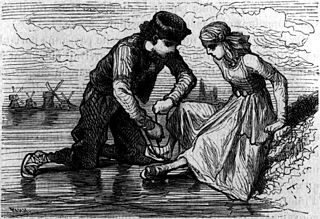 W
WHans Brinker, or The Silver Skates is a novel by American author Mary Mapes Dodge, first published in 1865. The novel takes place in the Netherlands and is a colorful fictional portrait of early 19th-century Dutch life, as well as a tale of youthful honor.
 W
WHeeswijk Castle is a moated castle near Heeswijk in the Dutch province of North Brabant.
 W
WThe Hiding Place is a 1971 book on the life of Corrie ten Boom, written by herself and John and Elizabeth Sherrill.
 W
WThe history of religion in the Netherlands has been characterized by considerable diversity of religious thought and practice. From 1600 until the second half of the 20th century, the north and west had embraced the Protestant Reformation and were Calvinist. The southeast was predominately Catholic. Associated with immigration from North Africa and the Mideast of the 20th century, Muslims and other minority religions were concentrated in ethnic neighborhoods in the cities.
 W
WHope & Co. is the name of a famous Dutch bank that spanned two and a half centuries. Though the founders were Scotsmen, the bank was located in Amsterdam, and at the close of the 18th century it had offices in London as well.
 W
WHortus Bulborum is a Dutch foundation that conserves historic cultivars of spring flowering bulb- and tuber crops. The collection garden of the foundation is located at the Zuidkerkenlaan in Limmen, Noord-Holland, Netherlands, near the historic city of Alkmaar.
 W
WKoek-en-zopie is a Dutch term that is used to denote the food and drink sold on the ice during periods of ice skating.
 W
WThe List of cultural icons of the Netherlands is a list of links to potential cultural icons of the Netherlands.
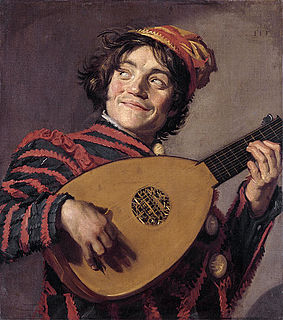 W
WThe Lute Player refers to a painting from 1623 or 1624 now in the Louvre by the Haarlem painter Frans Hals, showing a smiling actor wearing a jester's costume and playing a lute.
 W
WMadurodam is a miniature park and tourist attraction in the Scheveningen district of The Hague in the Netherlands. It is home to a range of 1:25 scale model replicas of famous Dutch landmarks, historical cities and large developments. The park was opened in 1952 and has since been visited by tens of millions of visitors. The entirety of net proceeds from the park go towards various charities in the Netherlands. In 2012, Madurodam celebrated its 60th anniversary.
 W
WThe Ministry of Education, Culture and Science is the Dutch Ministry responsible for education, culture, science, research, gender equality and communications. The Ministry was created in 1918 as the Ministry of Education, Arts and Sciences and had several name changes before it became the Education, Culture and Science in 1994. The Ministry is headed by the Minister of Education, Culture and Science, currently Ingrid van Engelshoven.
 W
WMoira is a music and arts venue in the city center of Utrecht, Netherlands.
 W
WMudflat hiking is a recreation enjoyed in the Netherlands, northwest Germany and in Denmark. Mudflat hikers are people who, with the aid of a tide table, use a period of low water to walk and wade on the watershed of the mudflats, especially from the Frisian mainland coast to the Frisian islands.
 W
WThe Muiderkring was the name given to a group of figures in the arts and sciences who regularly met at the castle of Muiden near Amsterdam during the first half of the 17th century, or the Golden Age of the Dutch Republic. The central figure of the Muiderkring was the poet Pieter Corneliszoon Hooft; Constantijn Huygens, Dirck Sweelinck, Vondel, Bredero and the poet sisters Anna Visscher and Maria Tesselschade Visscher were also considered part of the group.
 W
WMusic venues in the Netherlands are a vivid part of the social cultural environment of the country.
 W
WThe Low Countries comprise the coastal Rhine–Meuse–Scheldt delta region in Western Europe, whose definition usually includes the modern countries of Luxembourg, Belgium and the Netherlands. Both Belgium and the Netherlands derived their names from earlier names for the region, due to nether meaning "low" and Belgica being the Latinized name for all the Low Countries, a nomenclature that went obsolete after Belgium's secession in 1830.
 W
WNederlands Dans Theater is a Dutch contemporary dance company. NDT is headquartered at the Lucent Danstheater in The Hague. In addition to the Lucent Danstheater, NDT performs at other venues in the Netherlands, including Amsterdam's Het Muziektheater and Nijmegen's Stadsschouwburg.
 W
WThe Netherlands Institute for Art History or RKD, previously Rijksbureau voor Kunsthistorische Documentatie (RKD), is located in The Hague and is home to the largest art history center in the world. The center specializes in documentation, archives, and books on Western art from the late Middle Ages until modern times. All of this is open to the public, and much of it has been digitized and is available on their website. The main goal of the bureau is to collect, categorize, and make art research available, most notably in the field of Dutch Masters.
 W
WThe Netherlands Wind Ensemble comprises musicians from all the major Dutch symphony orchestras. Playing together for the sheer joy of it, the NBE’s twenty or so members meet up around eighty times per year to perform special programmes both in the Netherlands and abroad. The ensemble is famous for its high level of performance and its unique and adventurous programming. Categorisations such as ‘classical’ or ‘contemporary’ are too narrow for their programmes, but one element they all share is a sense of the theatrical.
 W
WOranjegekte or Oranjekoorts is a phenomenon in the Netherlands that occurs during major sporting events, especially international football championships, F1 Grand Prix and during Koningsdag, an annual holiday celebrating the king's birthday. It manifests itself in the wearing of orange clothing such as T-shirts, caps and scarfs; lavish attention for sports and sports fans in the media; and the decoration of cars, rooms, houses, shops, and even entire streets in orange, the traditional colour of the Dutch royal family, the House of Orange-Nassau.
 W
WAn Oudemannenhuis, or Old Men's house is a Dutch term for a home for poor men older than sixty, who could spend their final days enjoying regular meals and a clean place to sleep. It can be regarded as an early type of retirement home, which lasted up to the 19th century. As an institution, they were an improvement over almshouses for the elderly poor known as hofjes. Because older men were generally less able to care for themselves than women, the city councils of the Netherlands built special purpose houses. After the introduction of Oudemannenhuizen, the hofjes were designed almost exclusively for women, because women could organize themselves more efficiently. For women who became too feeble to take part in hofje life, special "old houses" for woman were opened, that were often combined with old men's houses. Like the hofjes, living in an old man's house was usually free of charge and was considered a favor.
 W
WPeeckelhaeringh, or Pekelharing, refers to an old Dutch word for pickled herring. Today it is best known as a jester by the same name who was the subject of a painting by Frans Hals.
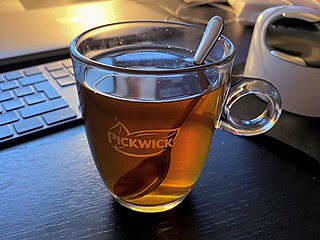 W
WPickwick is a tea brand, marketed by Dutch company Douwe Egberts. It is the largest tea brand in the Netherlands and the leading brand in market share of black tea there, although its share has been decreasing due to competition. As of 2014, it is also the leading tea brand in Denmark, with 27% of market share.
 W
WRedhead Day is the name of a Dutch summer festival that takes place each first weekend of September in the city of Tilburg, and up to 2018 in the city of Breda, in the Netherlands. The two-day festival, which inaugurated in 2005, is a gathering of people with natural red hair, but is also focused on art related to the colour red.
 W
WRijksdienst voor het Cultureel Erfgoed often abbreviated as Cultureel Erfgoed, is a Dutch heritage organisation working for the protection and conservation of National Heritage Sites. It is located in Amersfoort, province of Utrecht.
 W
WThe Royal Library of the Netherlands is the national library of the Netherlands, based in The Hague, founded in 1798. The KB collects everything that is published in and concerning the Netherlands, from medieval literature to today's publications. About 7 million publications are stored in the stockrooms, including books, newspapers, magazines and maps. The KB also offers many digital services, such as the national online Library, Delpher and The Memory. Since 2015, the KB has played a coordinating role for the network of the public library.
 W
WSchutterij refers to a voluntary city guard or citizen militia in the medieval and early modern Netherlands, intended to protect the town or city from attack and act in case of revolt or fire. Their training grounds were often on open spaces within the city, near the city walls, but, when the weather did not allow, inside a church. They are mostly grouped according to their district and to the weapon that they used: bow, crossbow or gun. Together, its members are called a Schuttersgilde, which could be roughly translated as a "shooter's guild". It is now a title applied to ceremonial shooting clubs and to the country's Olympic rifle team.
 W
WSinterklaas or Sint-Nicolaas is a legendary figure based on Saint Nicholas, patron saint of children. Other names for the figure include De Sint, De Goede Sint, and De Goedheiligman in Dutch; Sanikolas in Papiamento; Saint Nicolas in French; Sinteklaas in West Frisian; Sinterklaos in Limburgs; Sunterklaos or Sünnerklaas in Low Saxon; Saint-Nikloi in West Flemish; Kleeschen and Zinniklos in Luxembourgish; Sankt Nikolaus or Nikolaus in German; and Sint Nicholas in Afrikaans.
 W
WTivoli is a popular music venue and cultural center in Utrecht, Netherlands. Tivoli is run by a non-profit organisation. The original organisation dates back to 1823 and functioned as a relaxing place outside the city's Stadsbuitengracht.
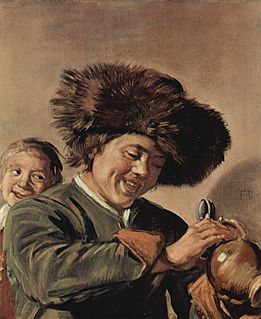 W
WTwo Laughing Boys with a Mug of Beer is a painting by Frans Hals showing a Kannekijker (mug-looker). Someone looking into a mug refers to an old Dutch word for a glutton, greedy for more. This visual theme was also used to depict sight as one of the five senses, and various people have argued about whether this portrait was meant as one in a series of the five senses along with Two Boys singing for hearing and a variant version of The Smoker for smell:
 W
WVan Dale's Great Dictionary of the Dutch Language, called Dikke Van Dale [ˈdɪkə vɑn ˈdaːlə] for short, is the leading dictionary of the Dutch language. The latest edition was published in 2015.
 W
WA veterstrikdiploma, also known as veterdiploma is a diploma which children between 5 and 6 years can get in the Netherlands and Belgium after they manage to tie their shoelaces by themselves. It is often the first diploma a child achieves and thus has an important pedagogic meaning, giving the child their first encounter with learning and the associated rituals.
 W
WVilla Welgelegen is a historical building in Haarlem, the Netherlands, which currently houses the offices of the provincial executives of North Holland. Located at the north end of a public park in the city, it is an example of neoclassical architecture, unusual for its style in the Netherlands.
 W
WWellerisms, named after sayings of Sam Weller in Charles Dickens's novel The Pickwick Papers, make fun of established clichés and proverbs by showing that they are wrong in certain situations, often when taken literally. In this sense, Wellerisms that include proverbs are a type of anti-proverb. Typically a Wellerism consists of three parts: a proverb or saying, a speaker, and an often humorously literal explanation.